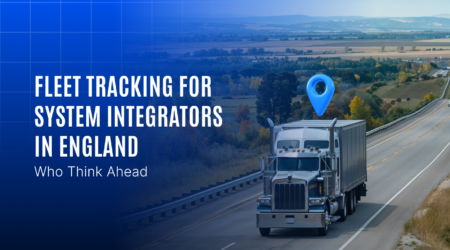Smarter Fleet Tracking with QR Code Scanner

Imagine a fleet arrives at your logistics hub, but instead of digging through paperwork or calling dispatch, you simply scan the QR code on it. This way, you can easily know which company/client it belongs to, its registration number, etc., and then update it into the database for efficient tracking.
We all know that, in logistics, quickness and accuracy matter a lot. Fortunately, due to the advancements in technology, tools like QR code scanners are now available. These are easily in the form of both mobile applications and web-based tools for maximum user ease.
In this blog post, we are going to discuss how exactly efficient fleet tracking can be performed using a QR code scanner.
So, without any delay, let’s get down to business.
What is a QR Code Scanner?
A QR code scanner is a device or software that is specially designed to read and decode QR codes. While reading, it effectively analyzes the pattern of black and white squares in the code and then displays the information they contain.
The information can be either a text, a link, contact/shipping details, etc.
How to Perform Smart Fleet Tracking with the Help of a QR Code Scanner
It is essential to know that a QR code scanner doesn’t directly assist in tracking. It only helps verify the information about containers, vehicles, etc., at checkpoints, allowing logistics staff to then update the info in the database for real-time tracking.
Below, we have discussed a proven approach that you need to follow for smartly tracking the fleet by utilizing a QR code scanner.
1. Pick a QR Code Scanner
This is obvious – you first have to pick a useful QR code scanner that will be used for scanning. As mentioned earlier, you have two options: Install a dedicated application on your tablet/phone or refer to an online QR code scanner.
We personally suggest going with the second one to avoid installation and storage hassles on your device.
However, before picking an online QR scanner, make sure it is 100% secure and accurate. Read the information available on the tool’s website to determine whether it stores users’ data or not. If it says no, then you are good to go. Additionally, using scanners that provide analytics can help businesses measure QR code ROI and understand how effectively their codes are driving engagement.
Additionally, make sure it is available for free and has no usage limitations. This is because,
2. Scan the QR Code
Once you have picked the online QR scanner, it’s time to simply scan the QR code that is placed on the fleet, i.e., container, vehicle, etc. Within a matter of seconds, the scanning tool will display the decoded information.
3. Verify & Update the Information
At Uffizio, we offer intelligent fleet management software designed to streamline your tracking operations.
- Real-time tracking
- Automated reports
- AI-powered insights
With Uffizio’s fleet management solutions, logistics companies can streamline operations, enhance visibility, and maintain full control over their fleets with ease.
Benefits of Using QR for Fleet Tracking
Now that you have understood the process, here are some key benefits of using QR codes for fleet tracking.
1. Seamless Vehicle Verification:
We all know that, for fleet managers, handling dozens of vehicles for verification is a routine task. However, performing this task with a traditional approach is quite hectic and challenging.
Fortunately, that’s not the case with QR codes. When each vehicle contains a unique QR code on it, a simple scan using a mobile or tablet will reveal all the necessary information about that vehicle i.e., license plate number, VIN, insurance details, fuel type, or driver assignment.
2. Enhanced Real-time Tracking
When integrated with specialized fleet management software or GPS, QR codes can create a bridge between the physical and digital world. Through scanning, drivers can easily update their location or delivery status at any time, giving managers real-time activity data.
Please note that QR codes aren’t tracking devices themselves. However, these do facilitate seamless updates in systems that monitor movement.
3. Improved Inventory & Asset Management:
Last but not least, beyond just vehicles, QR codes can also be attached to cargos, trailers, spare parts, or any other movable asset within the fleet. This way, managers can maintain an up-to-date record of all components used in operations.
A scan can show who last used an item, when it was moved, and its condition.
So, these are a few of the major benefits of using QR codes in fleet tracking.
Final Words
For effective tracking, verifying the fleet at the different checkpoints is an essential task. To simplify this process, logistics staff are now utilizing intelligent QR code scanners.
These specialized solutions effectively decode and display the information that the QR code contains. This information can then be updated into the software for tracking. This article has explained all those steps in detail, along with proper demonstrations.

